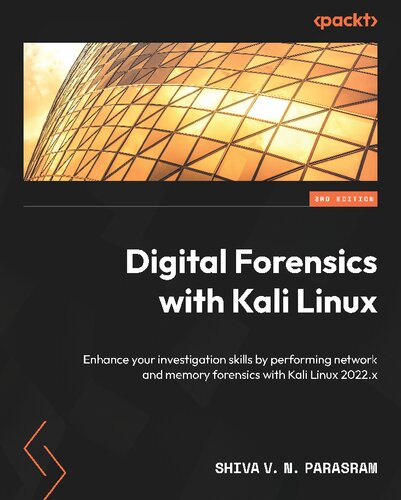

Most ebook files are in PDF format, so you can easily read them using various software such as Foxit Reader or directly on the Google Chrome browser.
Some ebook files are released by publishers in other formats such as .awz, .mobi, .epub, .fb2, etc. You may need to install specific software to read these formats on mobile/PC, such as Calibre.
Please read the tutorial at this link: https://ebookbell.com/faq
We offer FREE conversion to the popular formats you request; however, this may take some time. Therefore, right after payment, please email us, and we will try to provide the service as quickly as possible.
For some exceptional file formats or broken links (if any), please refrain from opening any disputes. Instead, email us first, and we will try to assist within a maximum of 6 hours.
EbookBell Team

0.0
0 reviewsExplore various digital forensics methodologies and frameworks and manage your cyber incidents effectively
Key Features
Book Description
Kali Linux is a Linux-based distribution that's widely used for penetration testing and digital forensics. This third edition is updated with real-world examples and detailed labs to help you take your investigation skills to the next level using powerful tools.
This new edition will help you explore modern techniques for analysis, extraction, and reporting using advanced tools such as FTK Imager, Hex Editor, and Axiom. You'll cover the basics and advanced areas of digital forensics within the world of modern forensics while delving into the domain of operating systems. As you advance through the chapters, you'll explore various formats for file storage, including secret hiding places unseen by the end user or even the operating system. You'll also discover how to install Windows Emulator, Autopsy 4 in Kali, and how to use Nmap and NetDiscover to find device types and hosts on a network, along with creating forensic images of data and maintaining integrity using hashing tools. Finally, you'll cover advanced topics such as autopsies and acquiring investigation data from networks, memory, and operating systems.
By the end of this digital forensics book, you'll have gained hands-on experience in implementing all the pillars of digital forensics: acquisition, extraction, analysis, and presentation – all using Kali Linux's cutting-edge tools.
What you will learn